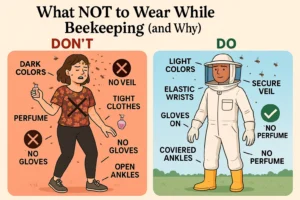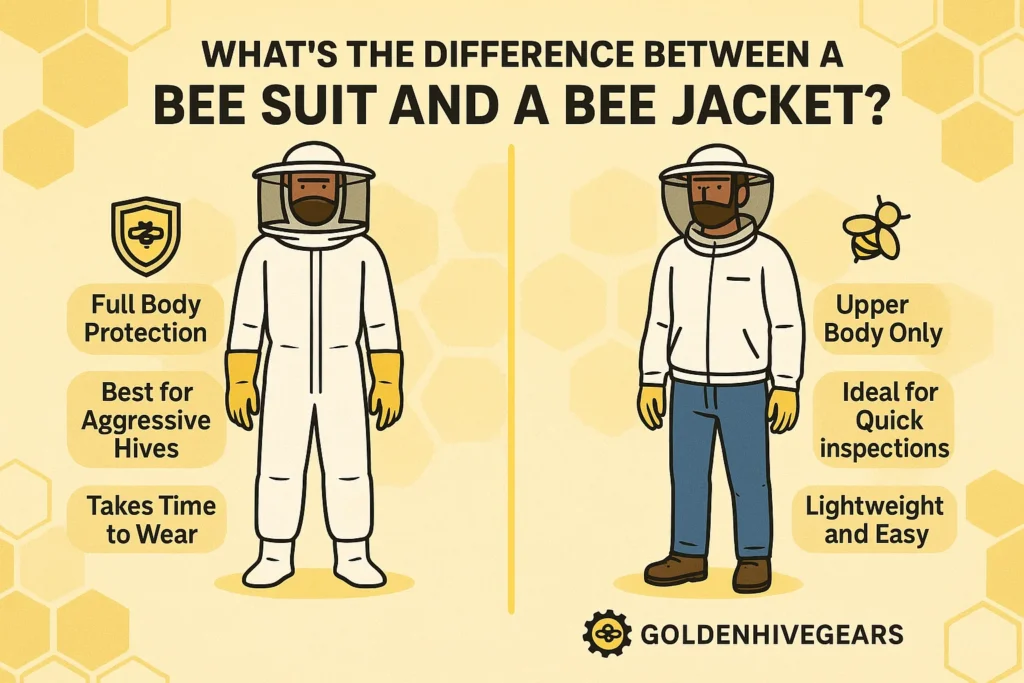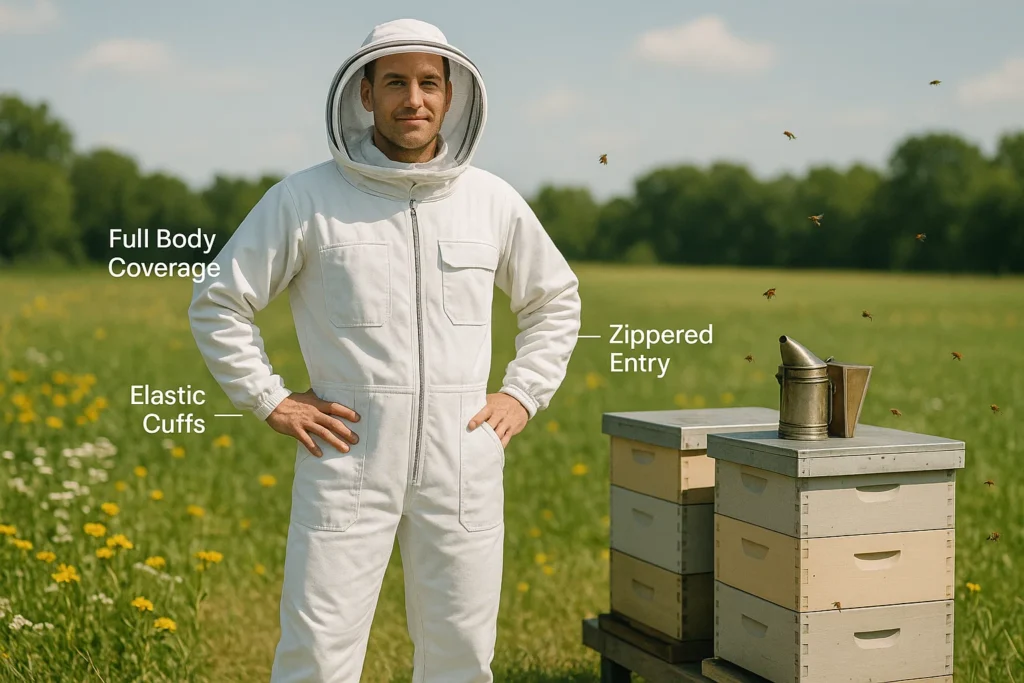
🐝 Gear Up. Stay Safe. Protect the Hive. 🌼

Choosing the Right Protection for Your Beekeeping Needs
Imagine you’re heading out to check your hives on a warm spring afternoon. You open your gear closet — should you grab your full bee suit or just the bee jacket? If you’re wondering what the difference really is — and which one is right for you — you’re not alone.
Choosing between a bee suit and a bee jacket comes down to factors like your environment, the temperament of your bees, and how long you’ll be working. In this blog, we’ll break down the key differences between these two essential pieces of beekeeping gear to help you make a confident, informed choice.
🧥 What Is a Bee Jacket?
A bee jacket is a lightweight upper-body garment designed to protect your torso, arms, and head during hive inspections. It typically includes:
🧑🚀 What Is a Bee Suit?
A bee suit is a full-body protective garment that covers you from head to ankle. It’s a more comprehensive option, used especially in high-risk or professional beekeeping environments.
Most suits include:

🧪 Side-by-Side Comparison
| Feature | Bee Jacket | Bee Suit |
| Coverage | Upper body only | Full body |
| Best Use | Quick inspections | High-risk or full hive work |
| Mobility | High | Medium |
| Heat Control | Excellent with ventilation | Needs ventilated panels |
| Ease of Use | Easy to wear/remove | Takes more time |
| Protection Level | Moderate | Maximum |
| Weight | Lightweight | Heavier (especially cotton suits) |
🐝 Which One Should You Choose?
Here’s how to decide between a bee suit and a bee jacket based on your specific needs:
💡 Pro Tip:
Many serious beekeepers keep both a suit and a jacket on hand. That way, they can choose based on the weather, the task, and the behavior of their bees.
🛒 GoldenHiveGears Offers Both — Built for Real Beekeepers
At GoldenHiveGears, we design our bee suits and jackets with purpose-built features like:
Whether you’re suiting up for a 5-minute hive check or an all-day harvest, we’ve got the gear to keep you safe, cool, and comfortable.

✅ In Summary:
| Situation | Best Choice |
| Hot day, light inspection | Bee Jacket |
| Aggressive hive or long work | Bee Suit |
| New to beekeeping | Bee Suit |
| Fast hive check in summer | Bee Jacket |
| Swarm removal or full protection needed | Bee Suit |
🛒 Not sure which to choose?
Explore GoldenHiveGears’ complete line of ventilated bee jackets and full-body suits — all tested by U.S. beekeepers, made for safety in every climate.
